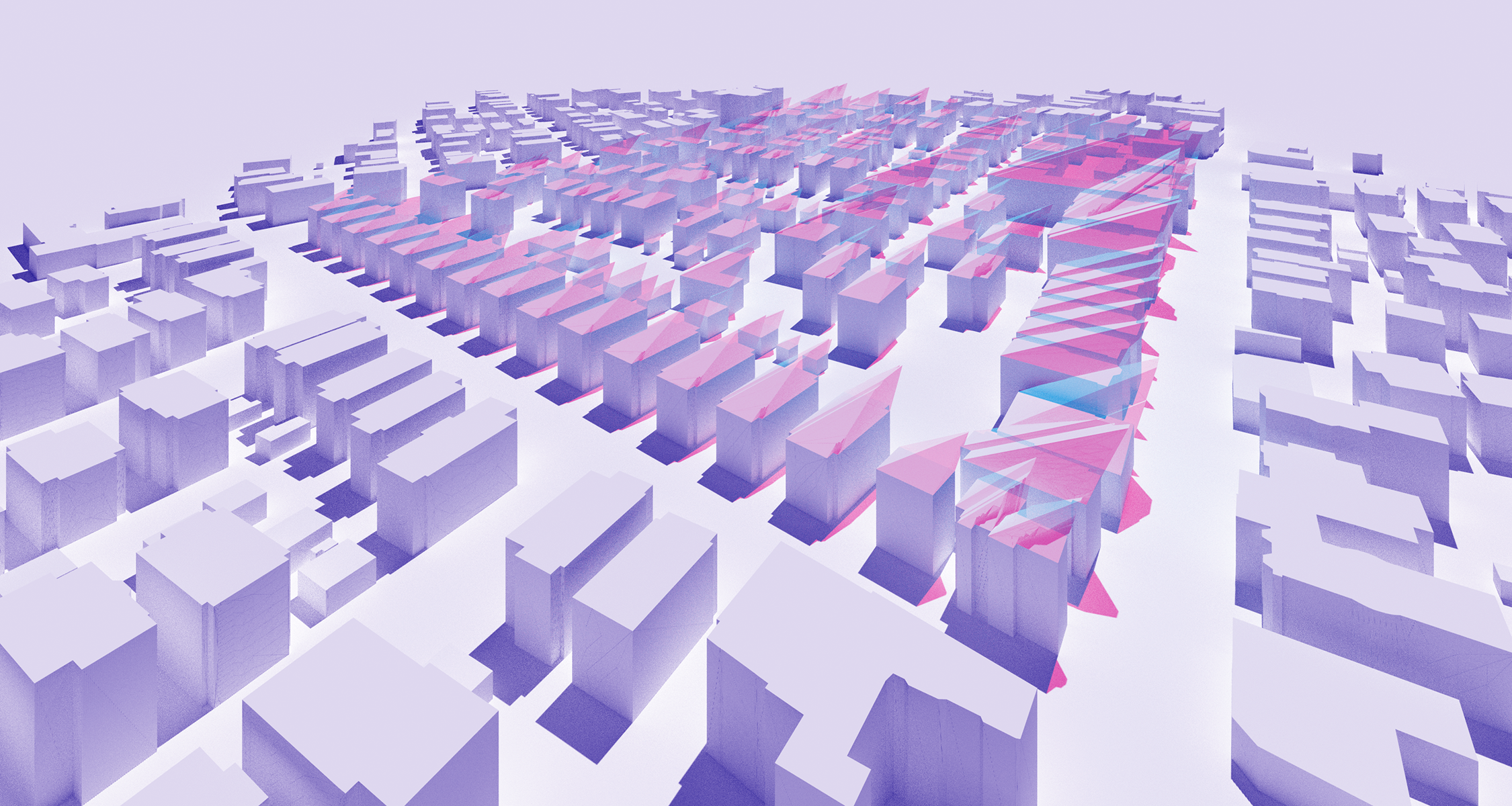Heliomorphism
Densification of Cambridge

New York’s 1916 Zoning Resolution controlled the bulk of buildings through setback requirements, in order to provide light and air to the streets. Hugh Ferriss imagined the logical extremes of this zoning resolution through atmospheric renders. Here, form was understood as a mediator of light rather than a composed object. The urban fabric was conceived as a series of rule-based responses to an ecological parameter; it was both an expression of an ecological response and an overarching social agenda.
This project develops a suite of tools to test this solar-driven urban design method and assess the relationship between urban geometry and the sun. In particular, we explore the generation, analysis, and subsequent expansion of solar envelopes, which are typically based upon a single parameter. In contrast, we explore the potential of multi-parameter solar envelopes by additionally optimizing for incident solar radiation and volume added. These parameters are used to reconstruct the solar envelope, and ultimately to transcend the singular nature of the original metric.
The resultant toolset is tested through an exploration of the densification of a neighborhood in Cambridge, a city that is characteristically low in density and that faces a growing housing crisis.

